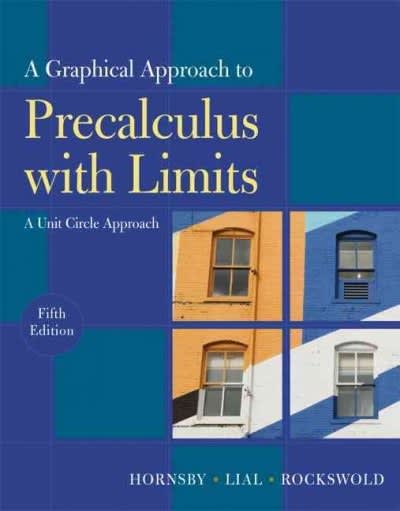Question
1.Match the term with the definition a) Population. b) Disease Distribution. c) Disease Frequency. d) Disease Determinants. e) Disease Control. _______ The act of sanitizing
1.Match the term with the definition a) Population. b) Disease Distribution. c) Disease Frequency. d) Disease Determinants. e) Disease Control. _______ The act of sanitizing and filtering water to reduce water- borne diseases. _______ African Americans have the highest rates of diabetes mellitus compared to individuals from other racial/ethnic groups in the United States. ______ Women of reproductive age who menstruate in the city of Seattle in a study about period product poverty in Seattle. _______ 14 people out of 100,000 die by suicide yearly. _______ Children growing up around those who smoke and experience second-hand smoking at a higher risk of asthma. _______ Adjusting crude rates according to the characteristics of the population
2.In the study of epidemiology, research in various disciplines and results from different experiments are used to create the scientific foundation for public health initiatives. Why is it sometimes difficult to transfer the information and analyses garnered by the controlled experiments of basic scientists to real life?
a) Basic scientists rarely conduct controlled experiments involving living organisms such as cells, tissues, or animals, so there is no way to translate these findings to living people in a real world environment b) Basic scientists do not conduct studies on disease mechanisms or processes, so their data cannot be used to create effective disease prevention initiatives in real life c) Controlled experiments by basic scientists eliminate many real-world aspects in order to regulate the environment which may make the results too artificial to apply to real-world settings d) None of the options apply
3. Which of the following features was true of the clinical trial designed by Sir Austin Bradford Hill for the Medical Research Council's Streptomycin in Tuberculosis Trials Committee? a) since large amounts of streptomycin were available in Britain the researchers decided it was ethical to use the drug during the trial for only the streptomycin group b) all patients with tuberculosis were accepted for the trial c) possible biases were ignored that could come with data collection as the researchers did not see this as a necessary step d) randomization was used when assigning patients to the streptomycin and control groups
4.Indicate which of the following statements do not accurately explain why researchers might prefer to study the incidence of a condition rather than its prevalence a) Because exposure timing in regard to disease frequency can be determined with more precision b) Because researchers are usually interested in exposures that lead to developing the disease c) Because incidence is most useful for evaluating the effectiveness of primary prevention programs d) Because incidence rates are useful for estimating more precisely the needs of medical facilities.
5.Which of the following measures of disease frequency would be used for research involving men in the Framingham Study who were recently diagnosed with heart disease in comparison to the number of person-years accrued by the members of the study? a) Cumulative Incidence b) Point Prevalence c) Incidence Rate d) Period Prevalence
6.Which of the following measures gives information about the strength of the relationship between the exposure and disease and is most useful for etiologic research? 1. Risk Difference (RD) 2. Relative Risk (RR) 3. Attributable proportion among the exposed (APe) 4. Direct Standardization
7. What is etiologic research(simplified) and what is Direct Standardization and the formula?
8. Crude rates have limitations when being used to make comparisons between different groups. What factors may impact the crude rates of populations being compared? a) Gender b) Race c) Age d) All the options apply
9. Given no association between exposure and disease, which of the following options is true? a) Relative Risk = 0 b) Risk difference = 0 c) Risk Ratio = 0 d) Risk difference = 1
10. Out of a group of 400 smokers, 23 develop lung cancer over 20 years. In a group of 2600 nonsmokers, 63 develop lung cancer over 20 years. What is the risk difference (RD) of developing bladder cancer for smokers compared to nonsmokers? Which is the appropriate interpretation of the risk difference? a) 33.17; 33.17% of lung cancer diagnoses in this sample of 3000 people were in smokers. b) 33.17; There was an excess of 33.17 cases per 1000 people of lung cancer in the smoking population. c) 24.33; There was an excess of 24.33 cases per 1000 people of lung cancer in the smoking population. d) 24.33; 24.33% of lung cancer diagnoses in this sample of 3000 people were in nonsmokers. e) 24.33; 24.33% of lung cancer diagnoses in this sample of 3000 people were in smokers.
11. hat distinguishes absolute measurements from relative measurements of comparison? How does this difference affect implications or assumptions made about a population and disease?
12. Community Immunity works well for a disease that has which of the following characteristics? a) Disease spread by direct transmission b) Disease only has one host c) The community at risk interacts randomly d) Disease or Immunization confers full protection e) All the options apply.
13. Define the terms primary and secondary data. How would you obtain primary and secondary data? When would be more appropriate to use secondary data?
14. Which affects the predictive value positive of a test the most? a) Specificity b) Sensitivity c) They both affect it the same. d) Neither of them affect it.
Step by Step Solution
There are 3 Steps involved in it
Step: 1

Get Instant Access to Expert-Tailored Solutions
See step-by-step solutions with expert insights and AI powered tools for academic success
Step: 2

Step: 3

Ace Your Homework with AI
Get the answers you need in no time with our AI-driven, step-by-step assistance
Get Started


